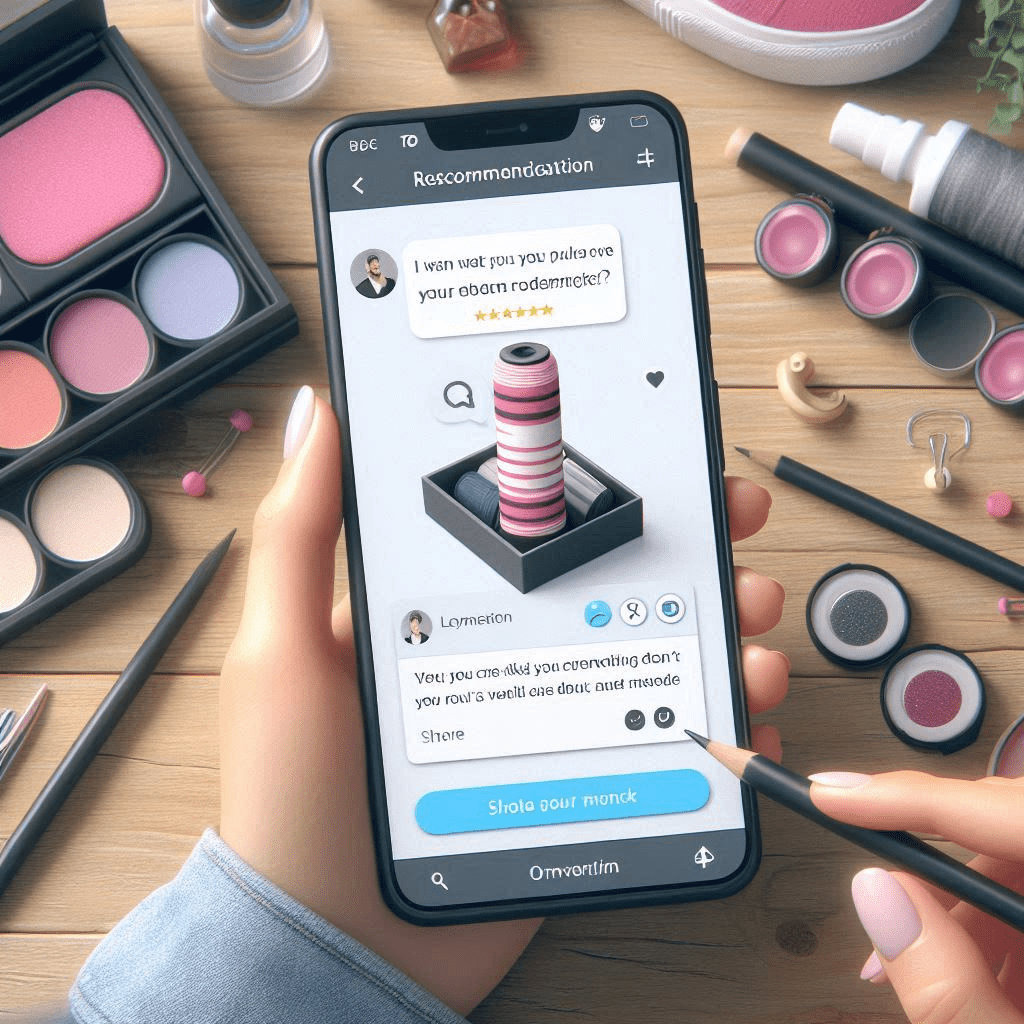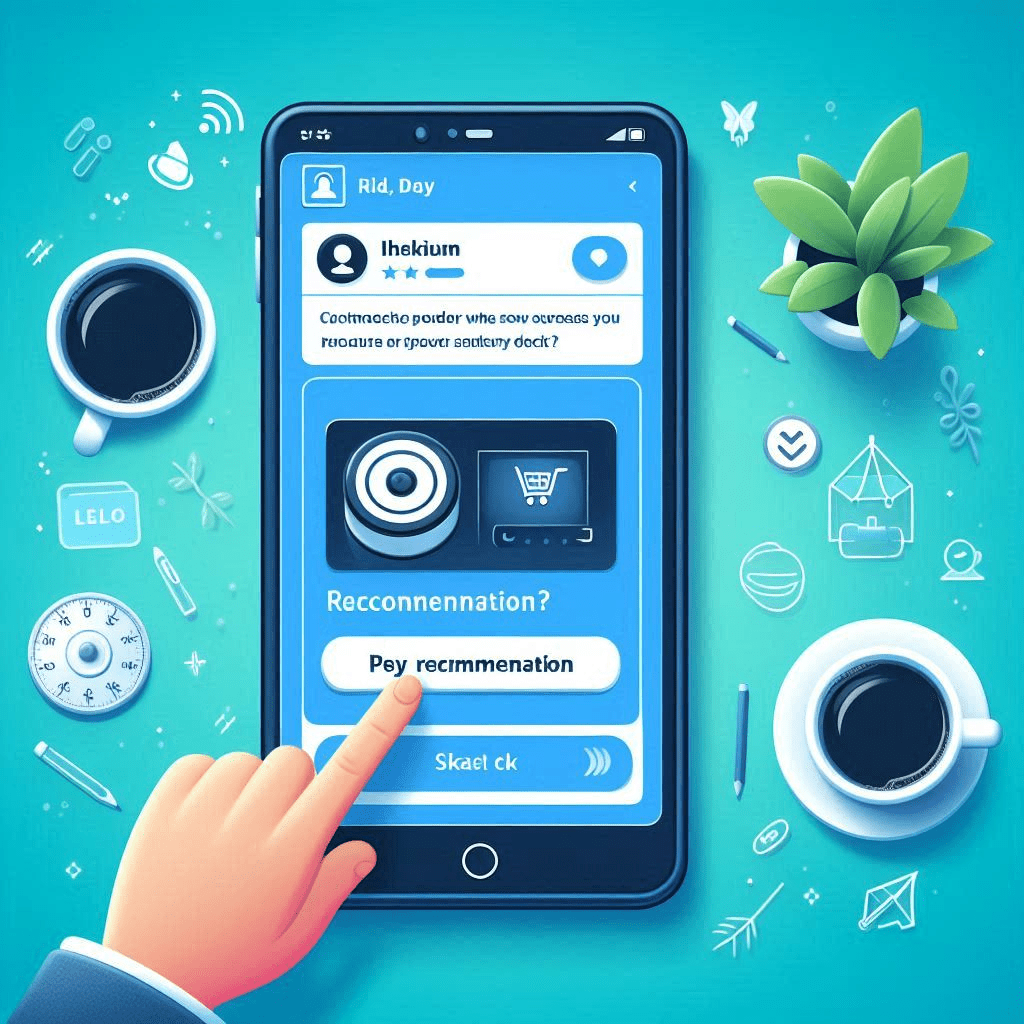Conversational Growth Strategy right now – Just Imagine scrolling through social media, bombarded by ads that feel like faceless shouts in a crowded room.
Suddenly, a brand pops up, not with a sales pitch, but with a friendly question: “Hey [Your Name], having trouble finding the perfect gift? Let’s chat and find something amazing!“
Intrigued, you start a conversation, get personalized recommendations, and walk away feeling like you actually connected with a real person. That’s the magic of a conversational growth strategy.
But why is it a must-have for your ecommerce business?
Buckle up, because we’re about to unveil –

📌#10 reasons why Conversational Growth Strategy is the key to unlocking explosive growth for your business:
- From Shout to Whisper: Ditch the impersonal megaphone and have a real conversation! People crave connection, not coercion. Conversational strategies build trust and rapport, making customers feel valued.
- Personalized Prince Charming: Imagine a salesperson who remembers your preferences! Conversations allow for recommendations and guidance tailored to each customer’s unique needs and buying journey.
- Instant Gratification Generation: People want answers now, not after waiting hours for an email response. Live chat, chatbots, and social media messaging provide instant support, keeping customers happy and engaged.
- Frictionless Funnels: Say goodbye to clunky forms and endless checkout processes! Conversations can seamlessly guide customers towards a purchase without feeling pushy, making the buying experience a breeze.
- Feedback Treasure Trove: Conversations are a goldmine of customer insights. You’ll hear firsthand what customers love (and loathe) about your products, helping you improve and innovate.
- Data that Doesn’t Snooze: Gone are the days of relying on hunches. Conversational data provides valuable metrics on customer satisfaction, purchase intent, and areas for improvement.
- 24/7 Salesperson on Call: Imagine having a tireless salesperson working around the clock! Chatbots can answer basic questions, handle simple transactions, and even qualify leads, freeing up your team for more complex tasks.
- Competitive Edge: The Conversation King: In a crowded marketplace, standing out is crucial. A conversational approach sets you apart by creating a personal connection with potential customers, fostering brand loyalty.
- Building an Advocacy Army: Happy customers become brand advocates. By providing exceptional conversational experiences, you’ll create a buzz that translates into positive reviews and word-of-mouth marketing.
- The Future is Now (and it’s Conversational): The way people shop is evolving. Conversational commerce through voice assistants and messaging apps is on the rise. Embrace the future and be at the forefront of this exciting trend!
✅PRO TIP: Check out hello24ai whatsapp marketing tool for Shopify 🔗(link) and WooCommerce 🔗(link) WordPress website
📌What is a Conversational Growth Strategy?
Imagine walking into your favorite coffee shop. The barista greets you by name, remembers your favorite drink, and even asks about your weekend. This personalized, friendly interaction keeps you coming back. Now, picture applying this level of engagement to your online business. That’s the essence of a conversational growth strategy.

💥The Power of Hyper Personalized Engagement
At its core, a conversational growth strategy leverages real-time, personalized communication to engage, nurture, and convert leads. It shifts the traditional marketing focus from one-way broadcasting to interactive, two-way conversations. Think of it as evolving from a billboard to a coffee chat.
💡Real-Life Examples: Turning Interactions into Relationships
💬Example 1: Ecommerce Personalization
Consider an online clothing store. Instead of bombarding visitors with generic pop-ups, they use a chatbot that greets customers with a friendly “Hey there! Looking for something specific today?” Based on the user’s response, the chatbot suggests products, offers style tips, and even provides discount codes tailored to the user’s preferences. This conversational approach transforms a potentially overwhelming browsing experience into a personalized shopping journey.
💬Example 2: SaaS Customer Support
A software-as-a-service (SaaS) company uses live chat and AI-powered assistants to provide instant support. When a user encounters an issue, they don’t need to sift through endless FAQ pages. Instead, they engage in a real-time conversation with a support agent or chatbot, who guides them through the solution step-by-step. This immediate, helpful interaction not only resolves issues faster but also builds trust and satisfaction.
💥How It Drives Growth
By fostering meaningful conversations, businesses can better understand customer needs, preferences, and pain points. This insight allows for more targeted marketing efforts, improved product development, and enhanced customer loyalty. Here’s why it works:
- Increased Engagement: Interactive conversations keep users on your site longer, reducing bounce rates.
- Higher Conversion Rates: Personalized recommendations and real-time assistance can significantly boost conversion rates.
- Enhanced Customer Loyalty: When customers feel heard and valued, they’re more likely to return and recommend your business to others.

💡Tools of the Trade
To implement a conversational growth strategy, businesses can utilize various tools:
- Chatbots: Automated bots that provide instant responses and gather user data.
- Live Chat: Real-time communication with human agents.
- Social Media Messaging: Engaging with customers through platforms they already use.
- Email Automation: Personalized follow-ups and targeted campaigns.
📌How to build a conversational growth strategy?
We all know the awkward feeling of striking up a conversation at a party. But fret not! Building a conversational growth strategy isn’t about small talk jitters. It’s about creating a roadmap for engaging, informative, and ultimately, growth-driven interactions. Here’s how to get started:
- Know Your Audience: It all starts by understanding who you’re talking to. What are their pain points? What platforms do they frequent? Imagine a fitness brand wouldn’t target conversations on professional networking sites, but might thrive on fitness communities or social media.
- Pick Your Channels: Not everyone enjoys phone calls. Luckily, the beauty of conversation strategies lies in their versatility. Choose the channels where your audience is most comfortable – live chat on your website, social media messaging, or even voice assistants like Alexa.
- Craft Compelling Content: Gone are the days of robotic scripts. Your conversations should be informative, engaging, and even a little bit fun! Think of it as creating a helpful friend, not a pushy salesperson.
- Embrace the Power of Personalization: People respond better to conversations that feel tailored to them. Use data and past interactions to personalize greetings, recommendations, and overall guidance.
- Listen and Learn: Conversations are a two-way street. Actively listen to your audience’s needs and concerns. This valuable feedback can inform product development, marketing strategies, and even future conversations.
💡Examples in Action:
- Feeling peckish? A food delivery app uses a chatbot to suggest restaurants based on your previous orders and current location.
- Travel blues? An airline chatbot walks you through the check-in process, answers questions about baggage allowance, and even cracks a joke to ease pre-flight jitters.
✅PRO TIP: Check out hello24ai whatsapp marketing tool for Shopify 🔗(link) and WooCommerce 🔗(link) WordPress website

📌How to Analyze your current conversational growth efforts?
Imagine you’re having a fantastic conversation with a friend, but you have no idea if they’re actually enjoying it. Analyzing your conversational growth efforts is like gauging that friend’s reaction. It helps you understand what’s working, what’s not, and how to make those conversations even more engaging.
Here’s how to dissect your current strategy and turn conversations into growth:
- Dive into the Data: Numbers don’t lie (well, not usually). Look at metrics like customer satisfaction scores from chat conversations, website conversion rates after live chat interactions, or even social media engagement after personalized messages.
- Track the Journey: Map out the typical customer journey through your conversational touchpoints. Are there any drop-off points where conversations fizzle out? Identifying these roadblocks can help you refine your approach and keep customers engaged.
- Sentiment Analysis is Your Friend: Technology can be your secret weapon. Sentiment analysis tools can scan conversations to understand the overall mood – happy, frustrated, or simply confused. This helps you identify areas where conversations can be made more positive and helpful.
- Listen Like a Pro: Don’t underestimate the power of human analysis. Review actual chat transcripts or social media interactions. Look for recurring questions, areas of confusion, or even positive feedback that can be incorporated into future conversations.
- Feedback is a Gift: Actively solicit customer feedback through surveys or polls after chat interactions. Ask them what they liked, what could be improved, or if their questions were answered effectively.
💡Real-World Example:
Let’s say you run an e-commerce store and use a chatbot to answer product questions. By analyzing conversation data, you might discover a high drop-off rate when customers ask about sizing. This could indicate a need for a more detailed size chart or a live chat option to connect with a real person for sizing advice.

📌 How to create consistent communication across channels?
Imagine walking into a conversation where one person is serious and formal, while the other is cracking jokes and using slang. Confusing, right?
That’s what happens when your brand communication lacks consistency across channels.
💥Here’s how to ensure your brand voice resonates clearly, no matter the platform:
- Unearth Your Brand Identity: It all starts with understanding the core essence of your brand. What are your values? What personality traits do you want to project? Are you playful and informative, or sophisticated and authoritative? This foundation will guide your communication style across all channels.
- Craft a Brand Style Guide: Think of it as a rulebook for your brand’s voice. This document should outline things like:
- Tone: Is it formal, friendly, humorous, or something else entirely?
- Language: Do you use industry jargon or keep it simple and conversational?
- Visual Identity: Ensure consistent use of logos, colors, and fonts across all platforms.
- Empower Your Team: Your employees are brand ambassadors too! Train them on the brand style guide and ensure everyone, from social media managers to customer service reps, is communicating with the same voice.
- Embrace Templates, But Not Blindly: Pre-designed templates can save time for social media posts or email newsletters. However, don’t be afraid to add a touch of personalization to fit the specific platform and audience.
- Monitor and Analyze: Consistency is an ongoing process. Regularly monitor your communication across channels. Look for any inconsistencies and make adjustments to ensure your brand voice remains clear and unified.
💡Channel Champions: Examples in Action
- Social Media Savvy: A fitness brand maintains a consistent voice across all social media platforms, using motivational quotes, workout tips, and behind-the-scenes glimpses, all delivered in a friendly and encouraging tone.
- Website & Email Harmony: An e-commerce store uses the same color scheme, fonts, and overall layout for their website and email newsletters, creating a seamless brand experience. The email content also reflects the brand’s friendly and informative tone, established on the website.

📌 How to monitor conversational growth performance?
Here’s how to become a master conversational growth analyst:
1. Choose Your Weapons Wisely (Metrics):
There’s a plethora of metrics out there, but not all are created equal. Focus on those that directly tie to your conversational growth goals. Here are some key options:
- Engagement Rate: How many people are initiating conversations with you on different channels (live chat, chatbot, social media messages)?
- Resolution Rate: Are conversations resolving customer issues effectively? Track the percentage of conversations where customers walk away feeling satisfied.
- Customer Satisfaction Scores (CSAT): Ask customers directly after a conversation how satisfied they were with the experience.
- Conversion Rates: Did conversations lead to desired outcomes like purchases, sign-ups, or website visits?
2. Leverage Technology (Analytics Tools):
Don’t drown in data spreadsheets! Many platforms offer built-in analytics tools that track key metrics and generate insightful reports. Utilize these tools to gain a clear picture of your conversational growth performance.
3. Track the Customer Journey:
Conversations are often just one touchpoint in a customer’s journey. Use analytics to understand how conversations influence other parts of the funnel. For example, track website traffic after a live chat interaction or analyze purchase behavior after a chatbot recommendation.
4. Sentiment is Your Friend:
People don’t always say what they mean explicitly. Sentiment analysis tools can scan conversations to gauge the overall mood – happy, frustrated, or confused. This can help you identify areas where conversations can be made more positive and helpful.
5. Don’t Forget the Human Touch:
While data is powerful, don’t underestimate the value of qualitative analysis. Review actual chat transcripts or social media interactions. Look for recurring questions, areas of confusion, or positive feedback that can be incorporated into future conversations.

💡Real-World Example:
Imagine you manage a customer service team that uses live chat to answer questions. You might use a combination of metrics like resolution rate and CSAT scores to gauge the effectiveness of your conversations.
Additionally, sentiment analysis could reveal a trend of frustration around a specific product feature. This valuable insight can then be used to improve product information or train chat agents on better-addressing customer concerns.
✅PRO TIP: Check out hello24ai whatsapp marketing tool for Shopify 🔗(link) and WooCommerce 🔗(link) WordPress website
📌The Power of Conversation is in Your Hands
In today’s digital landscape, customers crave connection, not coercion. They want to be heard, understood, and guided through their buying journey. A conversational growth strategy empowers you to do exactly that. It’s the key to unlocking explosive growth, building brand loyalty, and leaving the competition in the dust.
💥Are you ready to transform website visitors into raving fans?
Don’t just take our word for it. See the power of conversation in action!
Book a free demo to explore our industry-leading conversational growth tool and discover how it can help your ecommerce business reach new heights.
Together, let’s turn conversations into conversions and watch your sales soar.



